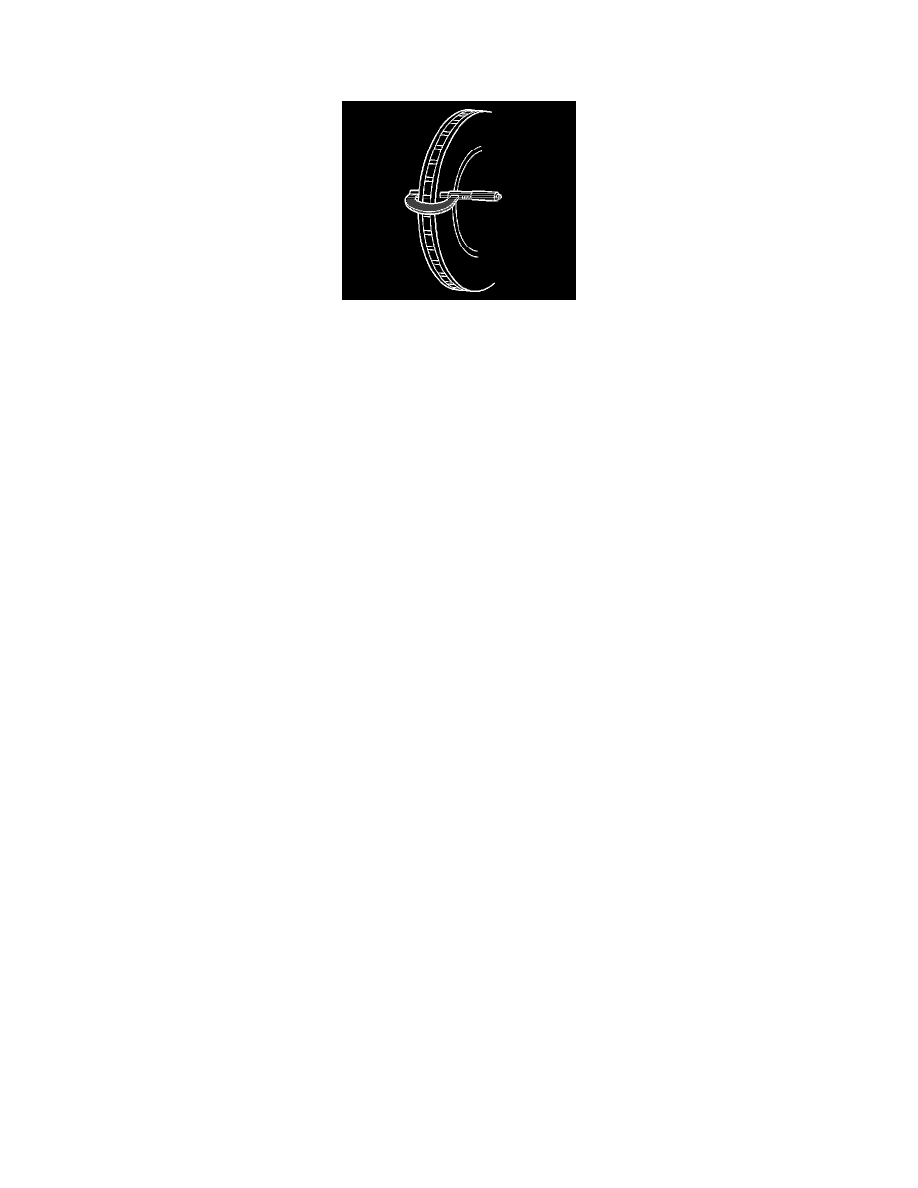Silverado 2500 4WD V8-6.6L DSL Turbo (2010)

Replacement/Rear Disc Brake Pads Replacement (JD9))Rear Disc Brake Pads Replacement (JH6, JH7) (See: Brake Pad/Service and
Repair/Removal and Replacement/Rear Disc Brake Pads Replacement (JH6, JH7)).
2. Clean the friction surfaces of the brake rotor with denatured alcohol, or an equivalent approved brake cleaner.
3. Using a micrometer calibrated in thousandths-of-a-millimeter, or ten-thousandths-of-an-inch, measure and record the thickness of the brake rotor at
four or more points, evenly spaced around the rotor.
Ensure that the measurements are only taken within the friction surfaces and that the micrometer is positioned the same distance from the outer
edge of the rotor, about 13 mm (1/2 in) for each measurement.
4. Compare the lowest thickness measurement recorded to the following specifications:
-
Brake rotor minimum allowable thickness after refinishing 37.0 mm (1.457 in)
-
Brake rotor discard thickness 36.50 mm (1.437 in)
-
Brake rotor minimum allowable thickness after refinishing 28.0 mm (1.10 in)
-
Brake rotor discard thickness 28.0 mm (1.10 in)
-
Brake rotor minimum allowable thickness after refinishing 18.5 mm (0.728 in)
-
Brake rotor discard thickness 18.0 mm (0.709 in)
-
Brake rotor minimum allowable thickness after refinishing 28.0 mm (1.102 in)
-
Brake rotor discard thickness 27.50 mm (1.083 in)
-
Brake rotor minimum allowable thickness after refinishing 29.0 mm (1.142 in)
-
Brake rotor discard thickness 28.50 mm (1.122 in)
5. If the lowest thickness measurement of the brake rotor is above the minimum allowable thickness after refinishing specification, the rotor may be
able to be refinished, depending upon surface and wear conditions which may be present.
6. If the lowest thickness measurement of the brake rotor is at or below the minimum allowable thickness after refinishing specification, the rotor may
not be refinished.
7. If the lowest thickness measurement of the brake rotor is at or below the discard thickness specification, the rotor requires replacement.
Brake Rotor Thickness Variation Measurement
Brake Rotor Thickness Variation Measurement
Warning: Refer to Brake Dust Warning (See: Service Precautions/Technician Safety Information/Brake Dust Warning).
Note: Any disc brake rotor that exhibits thickness variation exceeding the maximum acceptable level must be refinished or replaced. Thickness
variation exceeding the maximum acceptable level can cause brake pulsation.
1. If the inboard friction surface of the brake rotor is not accessible, reposition and support the caliper with the brake pads. Refer to Front Disc Brake
Pads Replacement (JD9, JF3, JF7, JG4) (See: Brake Pad/Service and Repair/Removal and Replacement/Front Disc Brake Pads Replacement
(JD9, JF3, JF7, JG4))Front Disc Brake Pads Replacement (JH6, JH7) (See: Brake Pad/Service and Repair/Removal and Replacement/Front Disc
Brake Pads Replacement (JH6, JH7)) and/or Rear Disc Brake Pads Replacement (JD9) (See: Brake Pad/Service and Repair/Removal and
Replacement/Rear Disc Brake Pads Replacement (JD9))Rear Disc Brake Pads Replacement (JH6, JH7) (See: Brake Pad/Service and
Repair/Removal and Replacement/Rear Disc Brake Pads Replacement (JH6, JH7)).
2. Clean the friction surfaces of the brake rotor with denatured alcohol, or an equivalent approved brake cleaner.
